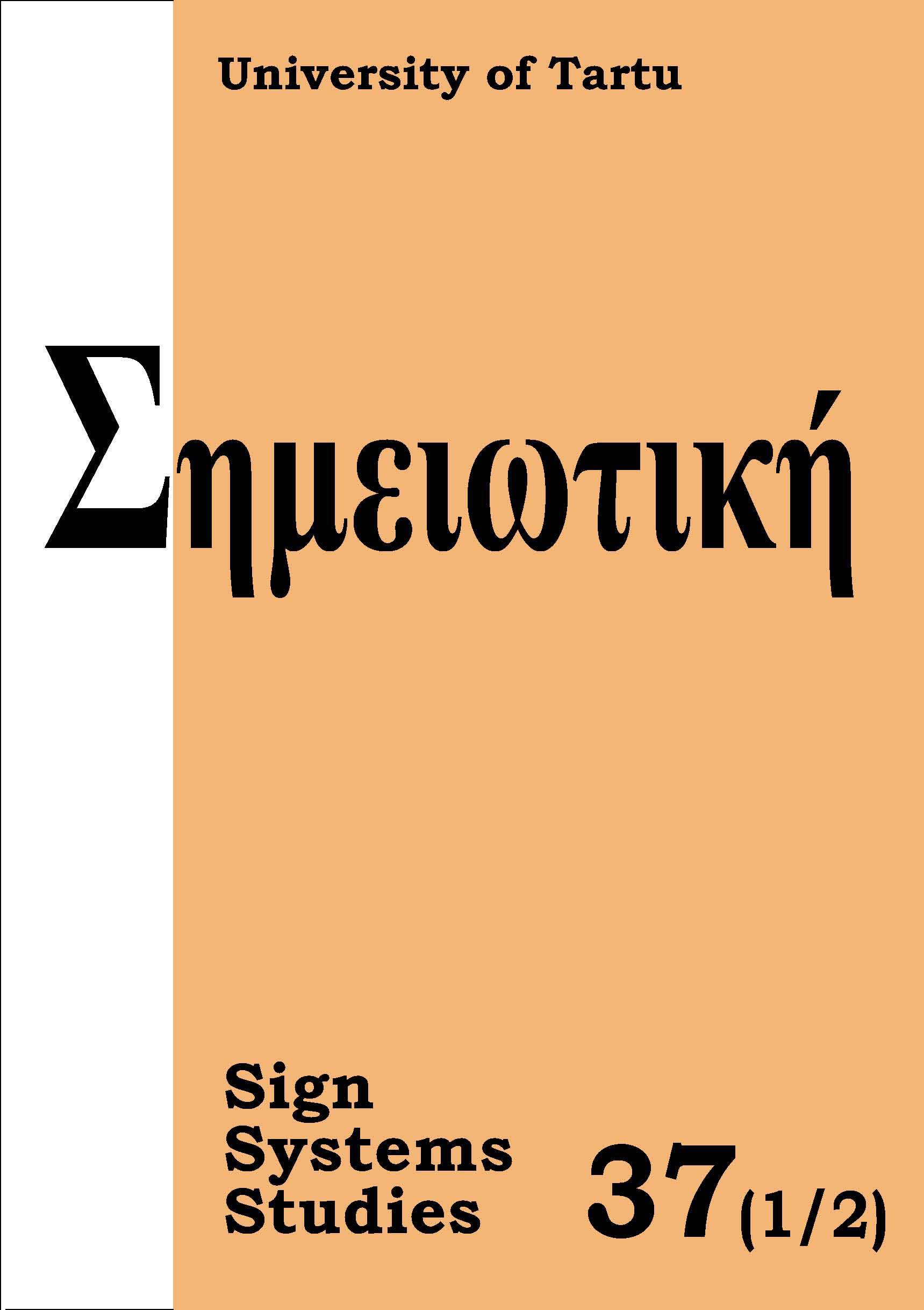A sketch of Peirce’s Firstness and its significance to art
DOI:
https://doi.org/10.12697/SSS.2009.37.1-2.08Abstract
This essay treats the growth and development of Charles S. Peirce’s three categories, particularly studying the qualities of Peirce’s Firstness, a basic formula of “airy-nothingness” (CP: 6.455) serving as fragment to Secondness and Thirdness. The categories of feeling, willing, and knowing are not separate entities but work in interaction within the three interpretants. Interpretants are triadomaniac elements through the adopted, revised, or changed habits of belief. In works of art, the first glance of Firstness arouses the spontaneous responses of musement, expressing emotions without the struggle and resistance of factual Secondness, and not yet involving logical Thirdness. The essential qualities of a loose or vague word, color, or sound give the fugitive meanings in Firstness. The flavor, brush, timbre, color, point, line, tone or touch of the First qualities of an aesthetic object is too small a base to build the logic of aesthetic judgment. The genesis art is explained by Peirce’s undegeneracy growing into group and individual interpretants and building into the passages and whole forms of double and single forms of degeneracy. The survey of the flash of Firstness is exemplified in a variety of artworks in language, music, sculpture, painting, and film. This analysis is a preliminary aid to further studies of primary Firstness in the arts.Downloads
Download data is not yet available.
Downloads
Published
2009-12-15
How to Cite
Gorlée, D. L. (2009). A sketch of Peirce’s Firstness and its significance to art. Sign Systems Studies, 37(1/2), 205–269. https://doi.org/10.12697/SSS.2009.37.1-2.08
Issue
Section
Articles


